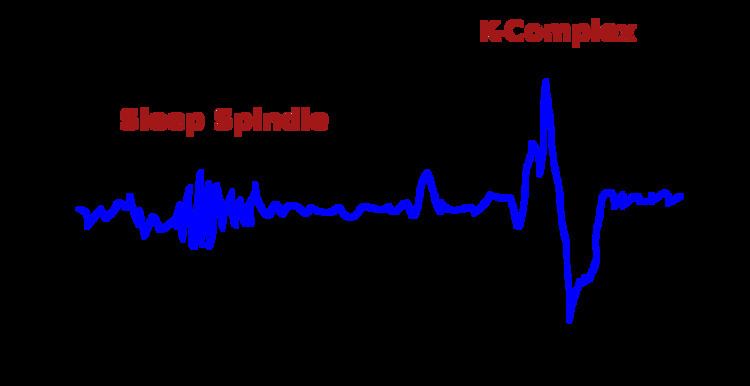 | ||
A sleep spindle is a burst of oscillatory brain activity visible on an EEG that occurs during stage 2 sleep. It consists of 12–14 Hz waves that occur for at least 0.5 seconds. Sleep spindles are generated in the reticular nucleus of the thalamus.
Function
Sleep spindles (sometimes referred to as "sigma bands" or "sigma waves") may represent periods where the brain is inhibiting processing to keep the sleeper in a tranquil state. Along with K-complexes they are defining characteristics of, and indicate the onset of, stage 2 sleep. They are often tapered at both ends and frequently seen over the frontal and central head regions. They may or may not be synchronous, but they should be symmetrical and bilateral.
During sleep these spindles are seen in the brain as a burst of activity immediately following muscle twitching. Researchers think the brain, particularly in the young, is learning about what nerves control what specific muscles when asleep.
Spindles generated in the thalamus have been shown to aid sleeping in the presence of disruptive external sounds. A correlation has been found between the amount of brainwave activity in the thalamus and a sleeper's ability to maintain tranquility.
Sleep spindles result from interactions between cells in the thalamus and the cortex.
Sleep spindle activity has furthermore been found to be associated with the integration of new information into existing knowledge as well as directed remembering and forgetting (fast sleep spindles).
During NREM sleep, the brain waves produced by people with schizophrenia lack the normal pattern of slow and fast spindles. Loss of sleep spindles are also a feature of familial fatal insomnia, a prion disease.
